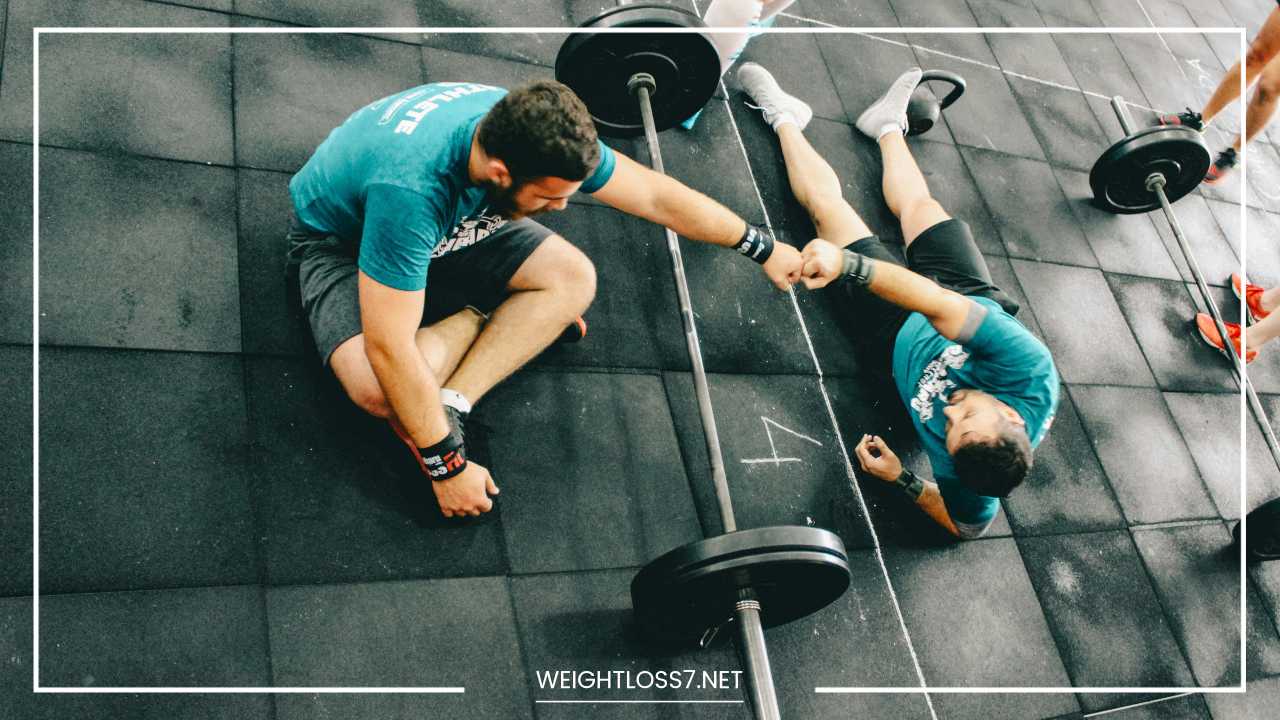Lose 30 Pounds In 30 Days: Guide to Rapid Weight Loss

Lose 30 Pounds In 30 Days
Mastering Rapid Weight Loss: How to Lose 30 Pounds in 30 Days
Embracing the Challenge of Rapid Weight Loss
Losing weight can feel like navigating a labyrinth, especially when aiming for significant results quickly. Shedding 30 pounds in just 30 days might seem audacious, but with the right strategies and unwavering commitment, it’s absolutely achievable.
This comprehensive guide delves into the science-backed methods and lifestyle changes you can leverage to kickstart your weight loss journey and witness remarkable results in just one month.
Setting Realistic Expectations: Aiming High, Landing Healthy
Before diving into the specifics, it’s crucial to set realistic expectations. While achieving a 30-pound loss in 30 days is possible, understand that rapid weight loss might not be entirely sustainable in the long run.
Additionally, individual results can vary based on factors like your metabolic rate, starting weight, and overall health.
The primary objective should be to jumpstart your journey towards a healthier lifestyle, cultivating habits that promote long-term weight management and overall well-being.
Consulting with Healthcare Professionals: Partnering for Success
Prior to making significant changes to your diet or exercise routine, consulting with healthcare professionals is highly advisable.
Schedule appointments with your primary care physician and a registered dietitian to discuss your weight loss goals, medical history, and any underlying health conditions.
They can provide personalized guidance and support, ensuring your weight loss efforts are safe and effective for your unique needs.
Creating a Calorie Deficit: The Science Behind the Burn
At the heart of any successful weight loss plan lies the concept of a calorie deficit – consuming fewer calories than you expend. To lose one pound of body weight, you need to create a deficit of approximately 3,500 calories.
Therefore, to lose 30 pounds in 30 days, you’ll need to create a significant calorie deficit through a combination of dietary modifications and increased physical activity.
Implementing a Healthy Diet Plan: Fueling Your Transformation
A crucial aspect of rapid weight loss is adopting a healthy and balanced diet plan. Focus on consuming nutrient-dense whole foods that provide essential vitamins, minerals, and macronutrients while limiting empty calories from processed foods and sugary snacks. Here are some key dietary strategies to consider:
- Portion Control: Be mindful of portion sizes and avoid overeating. Using smaller plates can help with visual cues, preventing you from piling on more food than your body needs.
- Lean Protein Powerhouse: Incorporate lean protein sources such as chicken breast, turkey, fish, tofu, and legumes into your meals. Protein promotes satiety, keeping you feeling fuller for longer, and helps preserve lean muscle mass during weight loss.
- Complex Carbohydrate Choices: Prioritize complex carbohydrates found in whole grains, fruits, and vegetables over refined carbohydrates. These complex carbs provide sustained energy and essential nutrients, keeping you feeling fuller for longer and preventing energy crashes.
- Healthy Fat Inclusion: Don’t shy away from healthy fats like avocados, nuts, seeds, and olive oil in moderation. Healthy fats are essential for hormone production, nutrient absorption, and promoting a sense of satiety.
- Hydration is Key: Stay hydrated by drinking plenty of water throughout the day. Sometimes, thirst can be mistaken for hunger, leading to unnecessary snacking. Aim to consume at least 8-10 glasses of water daily for optimal hydration to support overall health.
Meal Planning and Preparation: Conquering Cravings with Foresight
One of the secrets to successful weight loss is meal planning and preparation. By preparing meals in advance, you can ensure you have healthy options readily available and avoid the temptation of reaching for unhealthy convenience foods.
Dedicate time each week to plan your meals, create a grocery list, and prep ingredients in advance. Consider batch cooking large quantities of healthy meals and portioning them out into individual servings for easy grab-and-go options throughout the week.
This proactive approach allows you to stay on track with your goals and avoid last-minute unhealthy choices.
High-Intensity Interval Training (HIIT): The Turbocharged Workout
In addition to dietary modifications, incorporating regular exercise into your routine is essential for rapid weight loss.
High-Intensity Interval Training (HIIT) is a highly effective workout method that alternates between intense bursts of activity and short rest periods.
HIIT workouts are known for their ability to burn calories both during and after exercise, thanks to the “afterburn effect” or excess post-exercise oxygen consumption (EPOC). Aim to incorporate HIIT workouts into your routine 3-4 times per week for maximum fat-burning benefits.
Resistance Training: Building Muscle, Boosting Metabolism
Don’t neglect resistance training! In addition to cardiovascular exercise, incorporating resistance training into your fitness regimen is crucial for building lean muscle mass, which boosts your metabolism.
Muscle tissue burns more calories at rest compared to fat tissue, making it a valuable asset in achieving and maintaining weight loss goals.
Aim to include resistance training exercises targeting major muscle groups, such as squats, lunges, deadlifts, and chest presses, into your workout routine at least 2-3 times per week. Here are some additional tips for maximizing the effectiveness of your resistance training:
- Progressive Overload: Gradually increase the weight, sets, or reps you perform over time to keep challenging your muscles and promote continuous growth.
- Proper Form: Focus on proper form for each exercise to maximize results and minimize the risk of injury. Consider seeking guidance from a certified personal trainer if needed.
- Compound Exercises: Prioritize compound exercises that work multiple muscle groups simultaneously, such as squats, lunges, and rows, to optimize efficiency and maximize calorie burn.
Prioritizing Sleep and Stress Management: Optimizing Your Weight Loss Journey
Inadequate sleep and chronic stress can sabotage your weight loss efforts in several ways. Here’s how:
- Hormonal Disruption: Sleep deprivation and chronic stress can disrupt hormone levels, like leptin and ghrelin, which regulate hunger and satiety. This can lead to increased cravings for unhealthy foods and difficulty feeling satisfied.
- Elevated Cortisol Levels: Chronic stress can lead to elevated cortisol levels, a stress hormone known to promote fat storage, particularly around the midsection.
Strategies for Sleep and Stress Management:
- Aim for Quality Sleep: Prioritize getting 7-9 hours of quality sleep per night to support optimal metabolic function and overall well-being. Establish a consistent sleep schedule, create a relaxing bedtime routine, and optimize your sleep environment for darkness, coolness, and quiet.
- Stress-Reduction Techniques: Incorporate stress-reducing activities such as meditation, yoga, deep breathing exercises, or hobbies into your daily routine. Find activities you enjoy that help you unwind and de-stress, promoting relaxation and mental clarity.
Monitoring Progress and Adjusting Accordingly: Tracking Your Success
Throughout your weight loss journey, it’s essential to monitor your progress regularly and make adjustments as needed. Here’s how to effectively track your progress:
- Track Food Intake: Utilize a food journal or calorie-tracking app to monitor your daily food intake. This allows you to stay accountable and identify areas for improvement.
- Track Exercise: Track your workouts, including the type of exercise, duration, intensity, and weight lifted. Monitoring your exercise helps you stay motivated and measure progress.
- Body Weight and Measurements: While focusing solely on the scale isn’t ideal, monitoring your weight and body measurements (waist, hips, thighs) can provide valuable data points. However, remember that muscle weighs more than fat, so a slight increase in weight could reflect muscle gain while losing fat.
Remember: Sustainable weight loss is a gradual process, and consistency is key. Celebrate your achievements along the way, no matter how small, and stay focused on your long-term health and well-being. Don’t be discouraged by occasional setbacks; view them as learning opportunities and recommit to your goals.
Additional Considerations:
- Safety Disclaimer: It’s important to reiterate that rapid weight loss can be challenging and may not be suitable for everyone. Consult with your doctor before starting any new diet or exercise program, especially if you have any underlying health conditions.
- Long-Term Sustainability: While this guide focuses on rapid weight loss, emphasize the importance of developing sustainable habits for long-term weight management and overall health.
- Support Systems: Consider including a section on the importance of building a support system. Surround yourself with positive and encouraging people who can motivate you on your weight loss journey.
Lose 30 Pounds in 30 Days Meal Plan
Let’s include a sample meal plan designed to help you lose 30 pounds in 30 days. This meal plan emphasizes nutrient-dense foods, portion control, and balanced macronutrients to support your weight loss goals while ensuring you meet your body’s nutritional needs.
Day 1
Breakfast:
- Scrambled eggs with spinach and tomatoes
- Whole grain toast
- 1/2 grapefruit
Mid-Morning Snack:
- Greek yogurt with mixed berries
Lunch:
- Grilled chicken salad with mixed greens, cucumber, bell peppers, and balsamic vinaigrette
Afternoon Snack:
- Carrot and celery sticks with hummus
Dinner:
- Baked salmon with quinoa and steamed broccoli
Evening Snack:
- Almonds and a small apple
Day 2
Breakfast:
- Overnight oats made with rolled oats, almond milk, chia seeds, and sliced strawberries
Mid-Morning Snack:
- Cottage cheese with pineapple chunks
Lunch:
- Turkey and avocado wrap with whole grain tortilla, lettuce, and tomato
Afternoon Snack:
- Bell pepper slices with guacamole
Dinner:
- Lean beef stir-fry with mixed vegetables and brown rice
Evening Snack:
- Greek yogurt with a drizzle of honey
Day 3
Breakfast:
- Whole grain cereal with skim milk and sliced banana
Mid-Morning Snack:
- Hard-boiled eggs
Lunch:
- Quinoa salad with black beans, corn, cherry tomatoes, and lime vinaigrette
Afternoon Snack:
- Sliced cucumber with hummus
Dinner:
- Grilled shrimp skewers with roasted sweet potatoes and asparagus
Evening Snack:
- Cottage cheese with sliced peaches
Day 4
Breakfast:
- Whole wheat English muffin with almond butter and sliced strawberries
Mid-Morning Snack:
- Mixed nuts (almonds, walnuts, and cashews)
Lunch:
- Tuna salad lettuce wraps with diced celery and carrots
Afternoon Snack:
- Apple slices with peanut butter
Dinner:
- Baked chicken breast with quinoa and steamed green beans
Evening Snack:
- Low-fat string cheese and grapes
Day 5
Breakfast:
- Veggie omelet with mushrooms, bell peppers, and onions
- Whole grain toast
Mid-Morning Snack:
- Cottage cheese with sliced pear
Lunch:
- Grilled vegetable and chickpea salad with feta cheese and lemon-tahini dressing
Afternoon Snack:
- Edamame (steamed soybeans)
Dinner:
- Turkey meatballs with marinara sauce over zucchini noodles
Evening Snack:
- Sliced bell peppers with hummus
Day 6
Breakfast:
- Protein smoothie made with spinach, banana, protein powder, and almond milk
Mid-Morning Snack:
- Greek yogurt with granola and berries
Lunch:
- Lentil soup with a side of mixed greens and whole grain crackers
Afternoon Snack:
- Baby carrots with tzatziki sauce
Dinner:
- Grilled tilapia with quinoa and roasted Brussels sprouts
Evening Snack:
- Air-popped popcorn
Day 7
Breakfast:
- Whole grain pancakes with sliced strawberries and a drizzle of maple syrup
Mid-Morning Snack:
- Hard-boiled eggs with cherry tomatoes
Lunch:
- Chicken Caesar salad with romaine lettuce, grilled chicken breast, cherry tomatoes, Parmesan cheese, and Caesar dressing (use light dressing)
Afternoon Snack:
- Cottage cheese with pineapple chunks
Dinner:
- Stir-fried tofu with broccoli, bell peppers, and brown rice
Evening Snack:
- Mixed nuts (almonds, walnuts, and pistachios)
This sample meal plan provides a balanced approach to rapid weight loss, focusing on whole, nutrient-dense foods and appropriate portion sizes.
Remember to adjust portion sizes and food choices based on your individual dietary needs and preferences. Combine this meal plan with regular exercise, proper hydration, and adequate sleep to maximize your weight loss results and achieve your goals of losing 30 pounds in 30 days.
Always consult with a healthcare professional before starting any new diet or exercise program to ensure it’s safe and appropriate for you.
Final Word: A Sustainable Approach to Rapid Weight Loss
Losing 30 pounds in 30 days is an ambitious yet achievable goal that requires dedication, discipline, and a multifaceted approach.
This guide has equipped you with the knowledge and strategies to create a calorie deficit through dietary modifications and increased physical activity.
You’ve learned how to implement a healthy and balanced diet plan, incorporate effective exercise routines like HIIT and resistance training, and prioritize sleep and stress management for optimal results.
Remember, rapid weight loss should be approached with caution, and prioritizing your health and well-being throughout the process is paramount. With unwavering commitment and the right strategies, you can jumpstart your journey to a healthier, happier you!

















